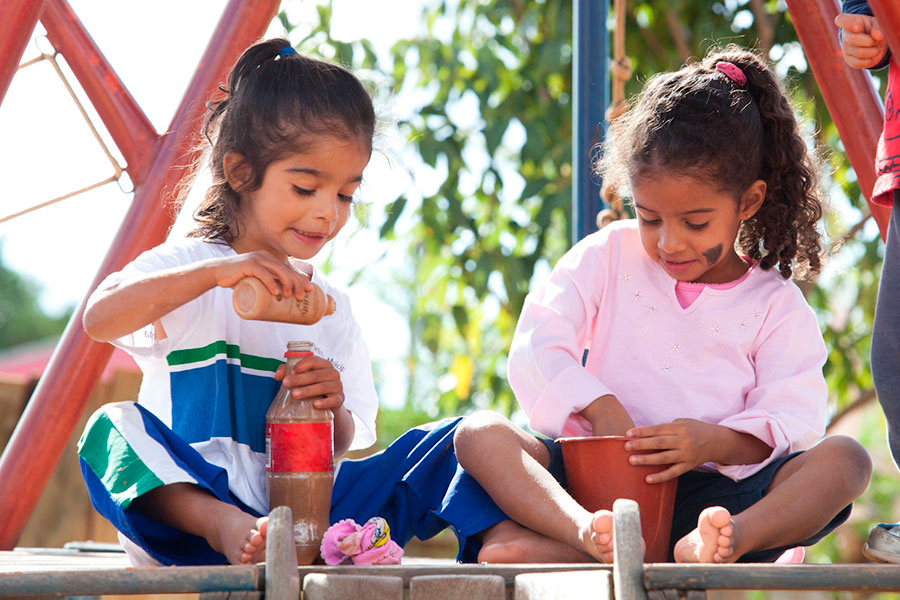The act of playing is still not seen by the population as something fundamental to children’s development, being considered just another way to have fun and pass the time. Only 19% of Brazilians believe that playing and going for a walk are important activities for children up to 3 years old. And, for 26%, it is the father who should take over contact games with the child, such as tag and horse riding.
Information worth sharing
The essence of childhood lies in the moments that the child has for exploration: pretend play, play and games. Therefore, this moment is fundamental for development, a right already provided for by law and as important as sleeping and eating.
Many adults consider play to be a child’s exclusive activity. In fact, it is the language of childhood. But it is important to remember that it is allowed (and even expected) for adults to play (alone, with other adults and with children).
In playful moments, it is possible to learn more about children than you imagine: what they know, how they are feeling, how they react when faced with a challenge. These are aspects, most of the time, not verbalized by them.
During play, children acquire skills to become capable of learning to learn, either through their actions on objects and people, or through their reactions to these stimuli. In other words, it is active in its development.
We must play with the child from birth. In addition to being fun, playing provides several good things: it stimulates knowledge of one’s own body, strength, elasticity, physical performance, which promotes better motor development; favors reasoning, stimulates creativity and imagination; Group play facilitates social interaction, helping children understand the rules and limits of relationships.
Other fundamental gains from playing – even if for a short time – are the building and strengthening of bonds, as children understand that adults care about them.
Encourage the child to play freely through imagination, “pretend”. Even if you are in a small place, without special toys, the important thing is that she notices your attention.
It is worth highlighting the importance of not overly protecting children while playing. A survey carried out by a cleaning products multinational showed that Brazilian parents (compared to Argentine, French and British parents) are those who give their children the least freedom in this regard: 82% of them claim that the concern that the child will get hurt prevents that they allow these new experiences.

Hassle-free information
Try to show, with examples or testimonials, that, through play, children learn about the world around them, spaces, objects and people. They do this by experimenting, making mistakes, trying again, getting things right and discovering.
Reinforce that activities such as painting, drawing, making up stories, running and jumping are more than just fun, they stimulate the child’s mind and body.
Practical examples of games that entertain adults and children can also help. How about showing activities with balloons or soap bubbles? There are many options and suggestions must take into account different factors, such as different contexts and regions. Remember to highlight that it is not necessary to have a lot of time or money to play.
Avoid associating playing with the acquisition of toys (generally expensive ones). Show that playing pretend or with simple everyday family objects can be equally (or more) fun and stimulating. Think about this when choosing examples. They must serve as many people and realities as possible.
Communication tools and other inspirations
Image suggestions
Show scenes of children playing with boxes, pans, clothes and other everyday objects to reinforce the idea that you don’t need a lot of money to provide children with playful moments.

Prefer images of games and toys in the places where communications will be broadcast to enhance the context of the intended audience




